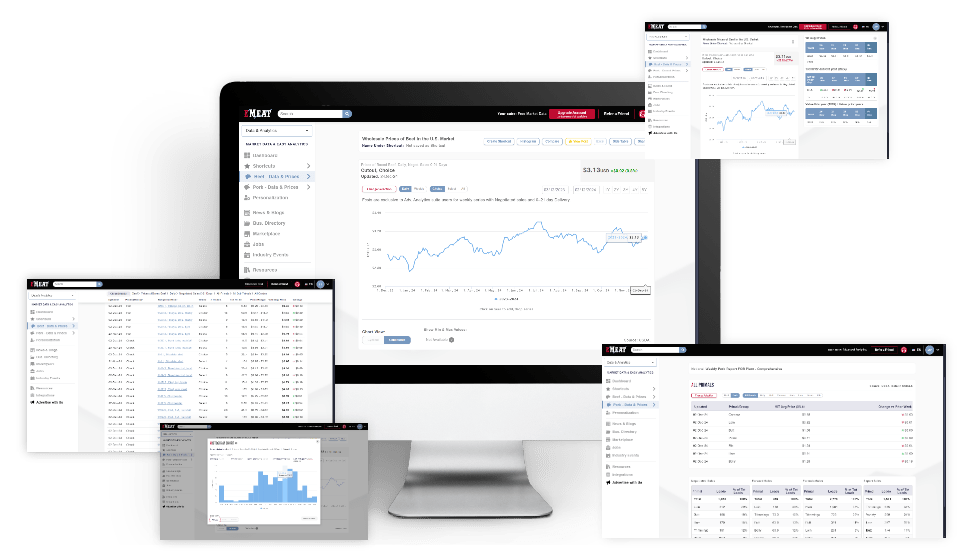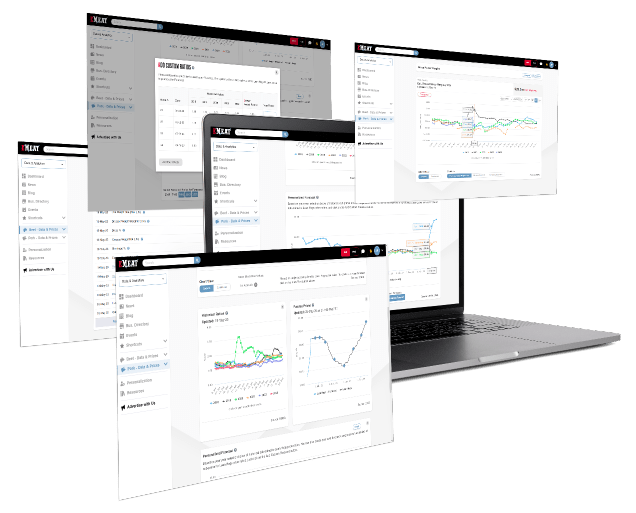
Market Data, Analytical Tools, and Insights for the North American Meat Industry
We provide market data, analytics, content, and insights tailored to the North American meat industry. By simplifying data analysis and interpretation with user-friendly, affordable, and customizable tools, we empower stakeholders across the value chain, including cattle ranchers, feedlot operators, packers, processors, distribution companies, restaurant chains, and retailers.
HISTORICAL DATA
Gain access to up to six years of historical data of the U.S. with easy analytics tools.
POWERFUL & INTUITIVE TOOLS
Anticipate beef & pork price movements with our Price Forecasting and Packer Margin analyses tools.
MARKET UPDATES
Receive the latest news and price data via our Daily Bulletin, Weekly Commodity Recap, and Weekly Newsletter directly to your mailbox.
INDUSTRY DEVELOPMENTS
Go to our News & Blogs, and Events sections to stay informed about the industry's latest developments.
BUSINESS DIRECTORY
Find the products & services you are looking for in our recently launched, multimedia-rich, and Bus. Directory.
Get the latest meat market prices — completely free and updated regularly to help you make smarter decisions and stay competitive. The available data categories include:
- U.S Prices (view full list of items)
- By-Product Drop Value
- Meat Production data
- Prices of Livestock
Plus a 14-day Free Trial of our Advanced Analytics Suite.

This suite grants you access to easy-to-use market data, analytics, and comprehensive insights to make smarter decisions based on production, distribution, market trends, and more.
- Six years of historical data
- Access interactive charts, side tables, and histograms, with the ability to download data in Excel format
- Import/Export data
- Meat in Cold Storage
- Weekly Commodity Recap


This suite offers everything in the Easy Analytics suite, plus a complete, all-in-one experience with powerful and intuitive meat price forecasting and risk management tools for the livestock and meat markets.
Take advantage of our 14-day Free Trial!

Integrate our APIs into your company's systems for an effortless and efficient North American Meat Industry data analysis experience.
- For nearly 3,200 series, we offer 10+ years of market data in the meat industry
- Plans start at $18 per month
I would like to congratulate EMEAT and Simon for the development of a tool that provides accessibility and visibility to key data in a very user-friendly way. EMEAT incorporates user interaction and flexibility in a simple, innovative way. I find the cyclical vs. continuous chart view feature...
Jose J. Montes
Managing Director at Monteli LLC
Meat prices during the first months of the COVID-19 pandemic reached unprecedented high levels. With EMEAT, it is not only easy to spot market trends but also perform various data analyses without having to download the data, which is very practical indeed.
Roberto Aguilar
General Manager at Santara
Sign Up and enjoy full access to EMEAT
Complete market data, advanced analytics, forecasting and risk management tools at your fingertips for 14 days. Don't miss the opportunity to explore EMEAT's full potential!
no payment information required

Copyright © 2021-2025. All rights reserved
This website stores cookies on your computer. These cookies are used to collect information about how you interact with our website and allow us to remember you. We use this information in order to improve and customize your browsing experience and for analytics and metrics about our visitors on this website. To find out more about the cookies we use, see ourPrivacy Policy.